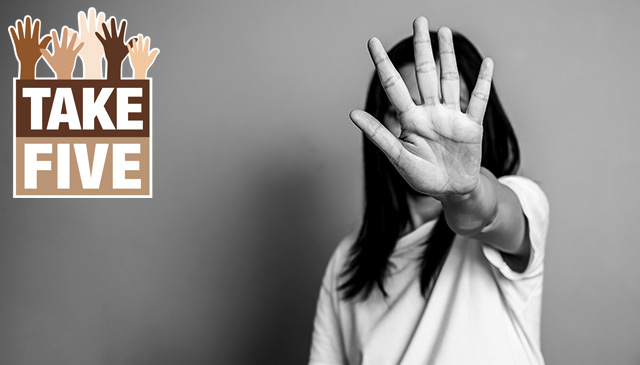
Emma Goldberg of the New York Times published an article on the experiences of several Black female physicians working in predominantly White clinical settings. One emergency attending physician shared, “People ask me several times if the doctor is coming in, which can be frustrating. They ask you if you’re coming in to take the trash out – stuff they wouldn’t ask a physician who was a White male.” For April 2021, we suggest that you “Take Five” to learn about how such interactions with patients and colleagues that might seem like minor, unintentional offenses have been termed “microaggressions” and are actually damaging to an individual’s health and sense of belonging in health care.
- Define racial microaggressions: Dr. Derald Wing Sue and colleagues define racial microaggressions as “brief and commonplace daily verbal, behavioral, or environmental indignities, whether intentional or unintentional, that communicate hostile, derogatory, or negative racial slights and insults toward people of color.” Please see the following video that further describes microaggressions: https://www.youtube.com/watch?v=nQ9l7y4UuxY
- Identify examples of microaggressions: Dr. Melanie Molina and colleagues provided a few examples of microaggressions in health care.
- Learn how often microaggressions occur: Racial microaggressions occur among approximately 80 percent of racial/ethnic minority providers.
- Understand the impacts: Microaggressions are linked to mental health, hypertension, personal wellness, and burnout among health care providers who are underrepresented in medicine, and mental health among patients.
- Courageously confront microaggressions: Dr. Derald Wing Sue and colleagues suggest that microaggressions can be addressed using use a three-step method called a “microintervention:”
Step 1. Make the invisible visible. Since microaggressions are often unintentional, it’s important to make others aware of what they said or what their actions were.
Step 2. Educate. Do not focus on the intent of the microaggression. Help the person know how the microaggression impacts you or someone else and explain why it is harmful.
Step 3. Disarm the microaggression. Steer the conversation away from the microaggression if it is inappropriate. This communicates that it is offensive and not something you want to entertain. You can address the microaggression directly during a 1-1 conversation.

